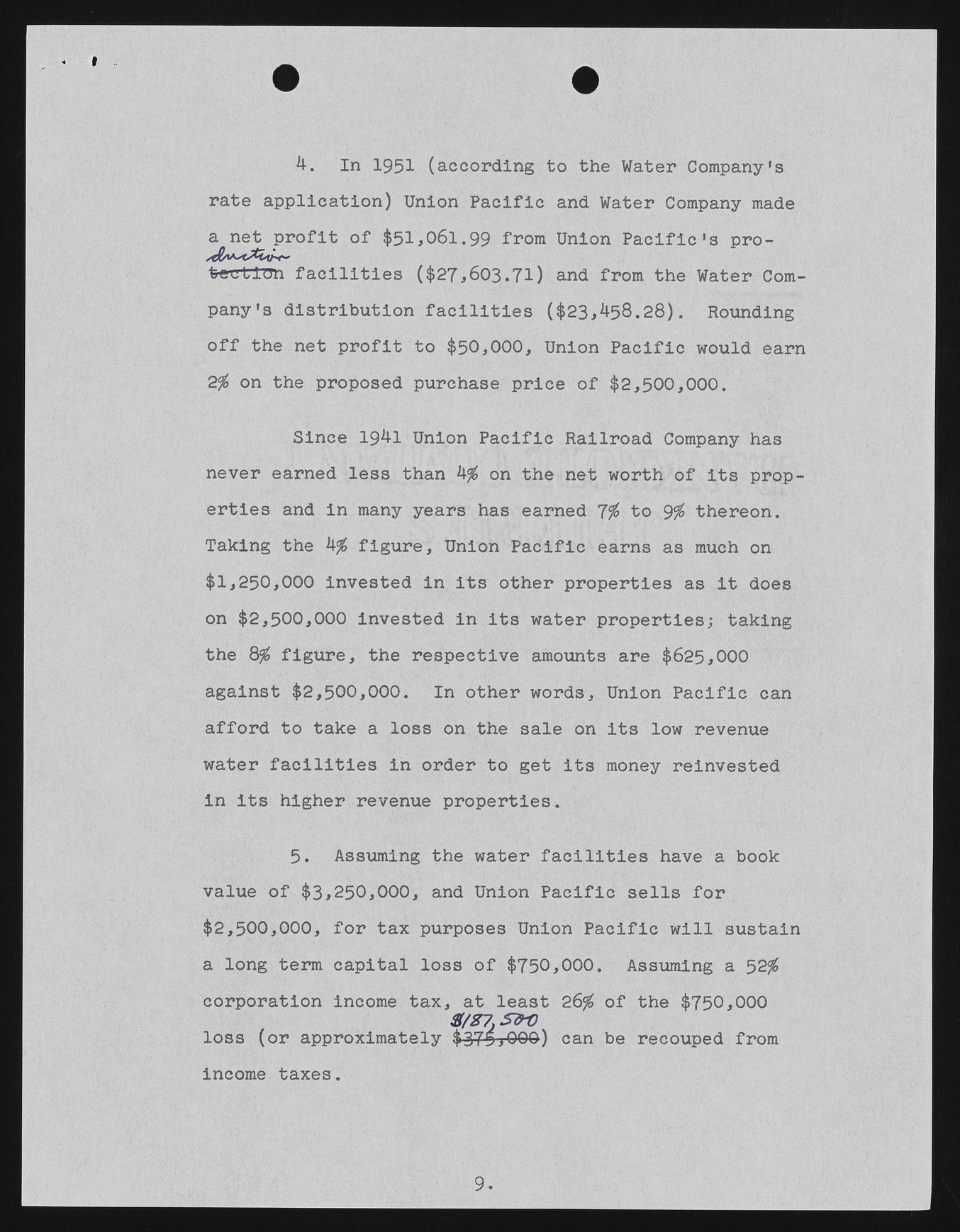Copyright & Fair-use Agreement
UNLV Special Collections provides copies of materials to facilitate private study, scholarship, or research. Material not in the public domain may be used according to fair use of copyrighted materials as defined by copyright law. Please cite us.
Please note that UNLV may not own the copyright to these materials and cannot provide permission to publish or distribute materials when UNLV is not the copyright holder. The user is solely responsible for determining the copyright status of materials and obtaining permission to use material from the copyright holder and for determining whether any permissions relating to any other rights are necessary for the intended use, and for obtaining all required permissions beyond that allowed by fair use.
Read more about our reproduction and use policy.
I agree.Information
Digital ID
Permalink
Details
More Info
Rights
Digital Provenance
Publisher
Transcription
r I • • 4. In 1951 (according to the Water Company’s rate application) Union Pacific and Water Company made a net profit of $51,061.99 from Union Pacific's pro-frerrtlUh facilities ($27,603.71) and from the Water Company’s distribution facilities ($23,458.28). Rounding off the net profit to $50,000, Union Pacific would earn 2$ on the proposed purchase price of $2,500,000. Since 1941 Union Pacific Railroad Company has never earned less than 4$ on the net worth of its properties and in many years has earned 7$ to 9$ thereon. Taking the 4$ figure, Union Pacific earns as much on $1 ,250,000 invested in its other properties as it does on $2,500,000 invested in its water properties; taking the 8$ figure, the respective amounts are $625,000 against $2,500,000. In other words, Union Pacific can afford to take a loss on the sale on its low revenue water facilities in order to get its money reinvested in its higher revenue properties. 5. Assuming the water facilities have a book value of $3,250,000, and Union Pacific sells for $2,500,000, for tax purposes Union Pacific will sustain a long term capital loss of $750,000. Assuming a 52$ corporation income tax, at least 26$ of the $750,000 8/S7jS&V loss (or approximately $375>000) can be recouped from income taxes. 9.

